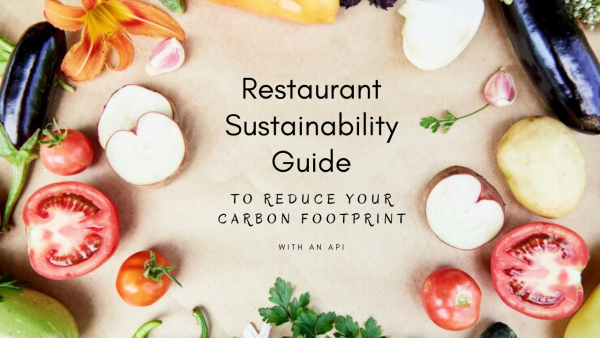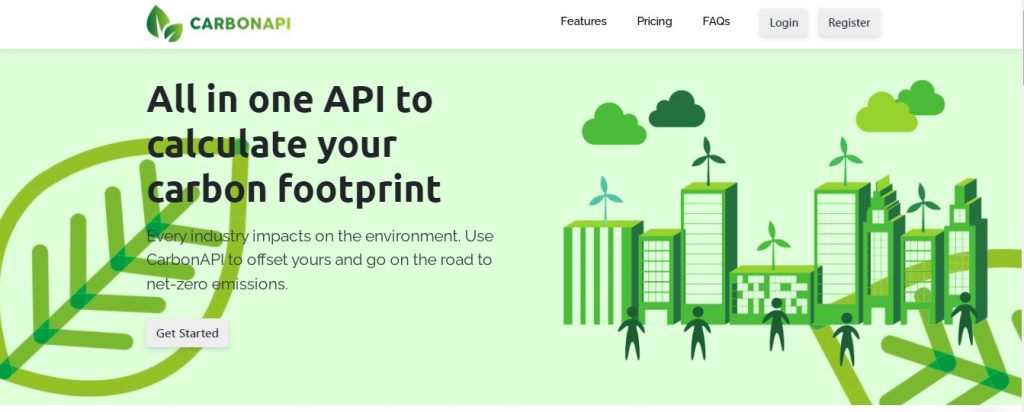While the restaurant sector strives to provide consumers with exceptional experiences, it also has a detrimental effect on the environment. Have you ever analysed your restaurant’s carbon footprint? Use a carbon API to figure it out and make your company more environmentally conscientious. We also provide sustainable suggestions to help you lessen your effect.
Generally, when we think about climate change and other environmental issues, we relate it to coal, petrol and different human activities that harm the ecosystem. But, the truth is something as vital as food also has a negative impact on the planet.
Let’s take, for example, meat. Livestock agriculture accounts for 13-18% of global greenhouse gas (GHG) emissions. Not to add that beef farming uses 28 times the amount of land, 11 times the amount of water, and creates five times the amount of greenhouse emissions as other animals.
Therefore, food-related industries such as restaurants aren’t very eco-friendly. A restaurant’s carbon footprint can be significant, ranging from livestock production carbon emissions to water utilised in the supply chain and soil degradation from over-cultivation and aggressive farming practices to bringing out-of-season products to the customer’s table.

For the newbies on the topic, a carbon footprint is the total amount of greenhouse gases –mostly CO2– released into the atmosphere result of an individual’s, organisation’s, or community’s activities, causing global warming and other environmental concerns. To reduce it, gastronomic places like restaurants implement or consider the following guidelines:
- Incorporate the farm-to-table movement, which emphasises the use of fresh, in-season foods.
- Replace Styrofoam and plastic (e.g. straws and takeaway containers) with compostable, biodegradable alternatives.
- Choose meat carefully — poultry is the most ecologically friendly meat to produce, accounting for only 10% of livestock-related GHG emissions – and encourage meat-free meals.
- Change your lighting system; switching from regular to LED light bulbs can cut your CO2 emissions by 50-70 per cent.
- Keep an inventory management system of perishable commodities in stock in real-time, preventing over-ordering and food deterioration – which equals 6% of world greenhouse gas emissions annually.
All in all, executing these measures little by little should reduce your carbon footprint. Yet, if you need an extra hand in achieving your environmental goals, you can always count on a carbon footprint calculator API. This tool will provide information regarding your carbon emissions during Pre-point-of-sale waste (waste generated before and during food preparation) and Post-point-of-sale waste (after the food is served). Check this out:
CarbonAPI
The carbon footprint calculator from CarbonAPI is the first step in achieving net-zero emissions. The API estimates emissions in production units per hour, material consumption units per hour, or any other unit of measurement that you require. As a result, it will assist you in accomplishing sustainability targets and promoting social responsibility in your organisation.
To begin with, this all-in-one CO2 tracker allows you to share your footprint data through API or website. You may include data on energy use, package delivery, freight & logistics, aircraft, and cars, among other elements. CarbonAPI will then categorise the input and, using several algorithms, calculate your carbon footprint in kilogrammes of carbon (CO2e). You’ll obtain analytical graphs of your usage and transparent reporting this way.
Overall, you’ve got a friend in CarbonAPI whenever you desire to measure, control and reduce your restaurant’s emissions. It is an easy-to-use solution with different billed plans for every usage and business. Yet, if you want to test it, you can try it out for free. This version of the software offers the Carbon footprint calculator, online reports, and API access. And, every month, you can make up to 20 requests or entries in the calculator.
Any doubt left about restaurant sustainability? Leave your questions in the comment!


